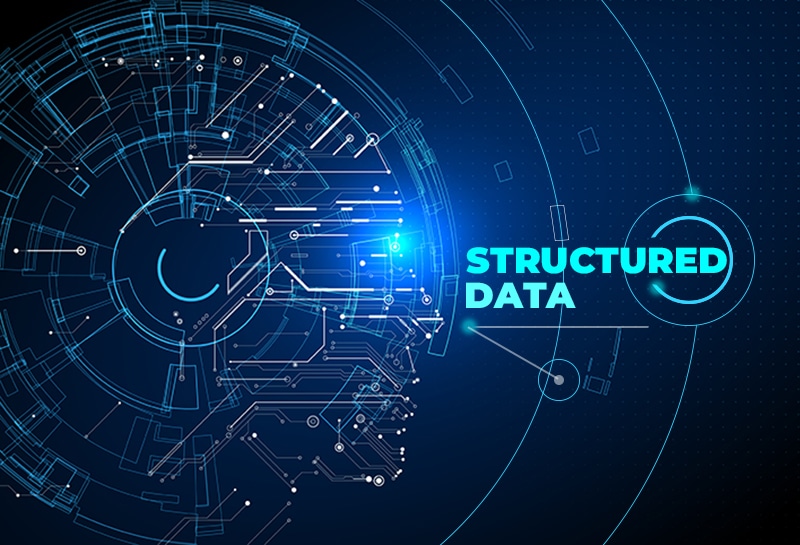Large volumes of data that build up in organizations can be pertinent in a legal dispute. For legal professionals, making this data discoverable is essential, but doing so is difficult for the IT teams that support them. This is where ediscovery services come in handy. These professionals are knowledgeable about the entire ediscovery process and work with you every step of the way to prevent complications or delays. Structured data for ediscovery can enhance the performance of production systems, ensure compliance, and accelerate e-discovery process. Your e-discovery approach must include a thorough data archiving strategy and solution as more structured data from more systems is needed as new regulations are issued.
Importance of Structured Data for Ediscovery
Writings, drawings, graphs, charts, photographs, sound recordings, images, and other data, as well as emails, documents, voicemail, and audio/video files, can all be found in databases of organizations as electronically stored information, or ESI. Data stored in the normal course of business is transformed into a format that can be used for review, research, and analysis during the eDiscovery process. Structured data for ediscovery is a crucial component of an organization’s managed information that must be taken into account when responding to any legal discovery, whether the data is housed on premises or in the cloud. Structured data can be retrieved as a full response to a legal discovery request.
Since the data can be quickly searched, sorted, and filtered, structured data is frequently referred to as the “gold standard” for eDiscovery. Due to this, it is the perfect framework for presenting evidence in court. Structured data can help shorten the eDiscovery process and lower costs if it is collected and processed correctly. The amount of data gathered through the discovery process is enormous. Without any particular tools or technology, it could be challenging to find what you’re seeking for because of this. Due to this, there is a considerable danger of missing deadlines, requests being denied for lack of supporting documentation, costs rising, and even penalties. Structured data can significantly improve the efficiency of finding pertinent information, and lower these risks.
Types of Structured Data for Ediscovery
Here is a list of different types of structured data for ediscovery
- Active: Active data is information that you frequently interact with, such as email and other conventional files kept on a local hard drive or network device. It is simple to access and gather this ESI.
- Mobile: Data collection from mobile devices frequently calls for highly specialized knowledge and complex techniques, necessitating consultants. But as more businesses adopt BYOD policies, they must be ready to collect and maintain ESI from call logs, text messages, instant messages, geolocation data, and other applications. Much of the current e-discovery procedure for mobile data collecting is explained by case law.
- Cloud: Over the past few years, the amount of cloud data being created and kept on servers has increased dramatically. This data includes everything from social network accounts to Google Drive and software as service apps. Although cloud providers have their own rules for accessing data, many of the most well-liked cloud services can be integrated by e-discovery technology solutions, making collecting simpler than it was even three years ago.
- Offline: Offline data that has been stored or archived but is no longer in use. Even though offline data can’t be accessed through a shared server, gathering it typically poses only minor difficulties as long as you know where the data is physically located and what system it is saved on.
- Backups: Backup data is supposed to be stored on traditional backup tapes or disaster recovery systems in case it needs to be recovered. These systems tend to provide major collection challenges because they compress files and are difficult to look for or retrieve.
- Hidden: Files that have been erased or are fragmented are present on several systems but are often hidden from view by typical system users. This data is extremely difficult to access, and recovering it would require sophisticated equipment.
Steps To Organize Structured Data For Ediscovery
- Examine the information at hand and the questions you’re attempting to address. Create a bubble map or diagram that visually connects the many relationships using input from those who are most knowledgeable with the case’s facts. The most productive way to do this is to brainstorm on a whiteboard.
- Find the systems that have the pertinent structured data and look into them to determine where they are located. Examine elements, such as the system owner, data format, accessible date ranges, system backup and archive procedure, system export capabilities, pre-existing premade reports, and user rights.
- Link the data together using a data map. Links are bits of information that are shared by two data sets and can be used to connect them. A data map explains how all the data are related to one another and how the database stores them.
- Create a data dictionary and structure. The dictionary should have descriptions of the information contained in each field at the table and field level. Your developed schema, or relational diagram, will help describe the connections between tables and fields.
- Establish the presentation of the data for production and review. Spreadsheets, graphical reports, scripted report reviews, and bespoke programs are all examples of review tools. Delimited text files, basic database tools, advanced database tools, replicated reports, and TIFF-formatted screen captures are all possible production possibilities. Ideally, during the meet and confer, the legal team will be able to decide on the production format early on. You can save a lot of time and effort throughout the discovery phase if you are aware of the production format as soon as possible.
- In order to study and analyze the information, extract it in a standard format. Establish ties that connect related data sets. The data must also be entered into the discovery system. The discovery system might be as straightforward as an Excel spreadsheet that the team can work on directly, or it could be a whole website designed just for this set of data. The complexity, size, and necessity of the case will determine the type of discovery system you use. Remember that in order to make sure you have maintained the integrity of your data, you will need to confirm the import procedure and the links.
- You must accommodate discovery requests while reviewing and analyzing the data. But there are many other ways to use structured data’s value. Using the data, you may run a gap analysis to find out what information is missing and acquire crucial insights into the case. For instance, in employment litigation, you may pinpoint every position from the pertinent department where a candidate was hired, but there is no proof that the other candidates were interviewed. The data can be used to quantify the case-specific facts, reducing the amount of time and money spent on research. To identify weaknesses in the other side’s argument, you can also examine the data they produced.
E-discovery can be accelerated, compliance can be ensured, application overhead can be decreased, and production system performance can be enhanced by archiving structured data. Your e-discovery approach must include a thorough structured data archiving strategy and solution as required per new regulations. It will not be possible to maintain all of the data in production systems and databases forever, and the amount of data you will need to keep accessible for e-discovery will just keep growing. Archiving your structured database for ediscovery is the only way to address the growingdifficulties of tremendous data expansion mixed with tightening e-discovery standards. The best option to achieve this is by partnering with a reputable provider of business process outsourcing services. They have experts who can handle enormous amounts of data and turn unstructured data into structured format.
| MOS team uses state-of-the-art technology to reduce your workload. Focus on reviewing documents, while we deal with any technical challenges involved in eDiscovery process. |




